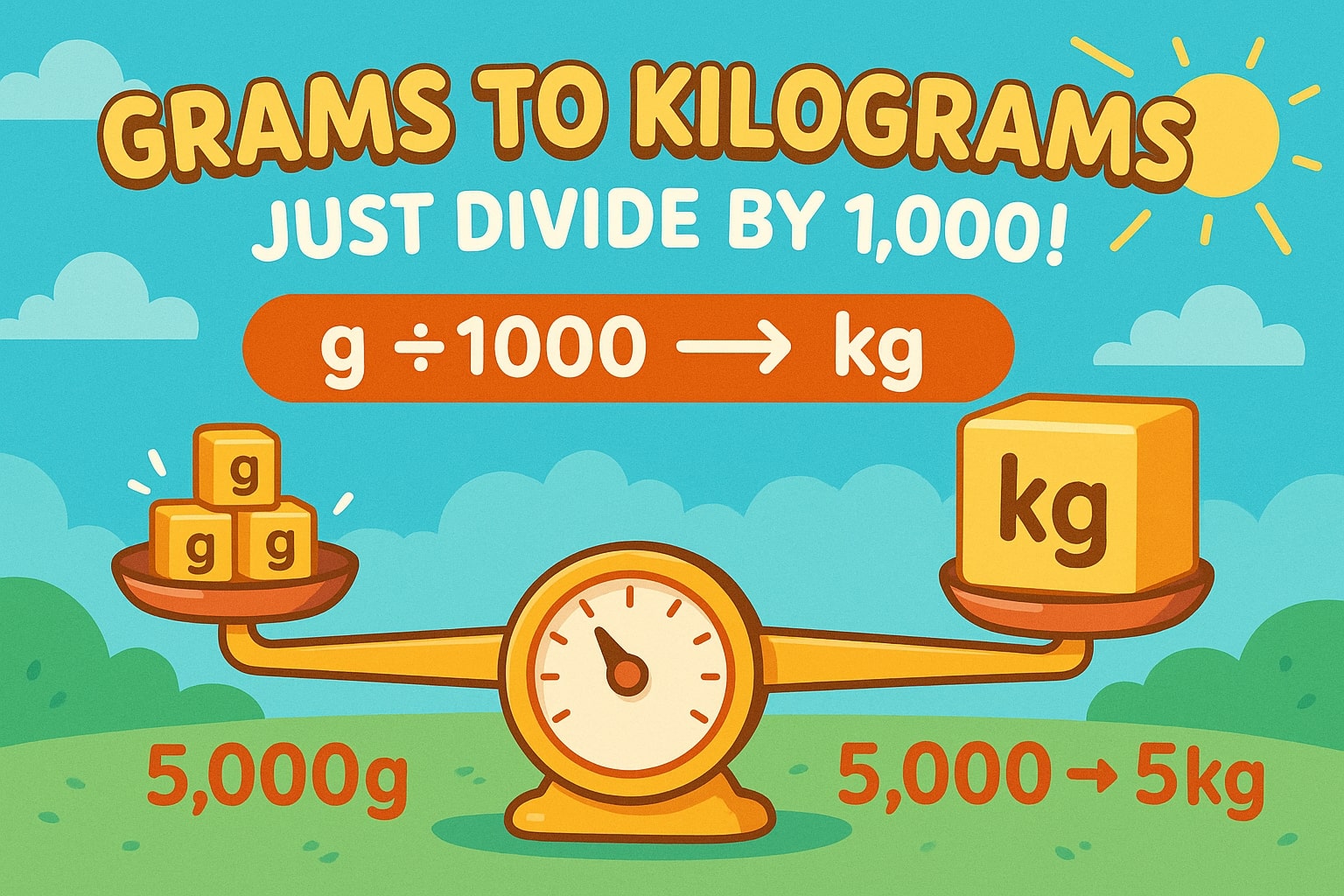Now that you know how to convert g to kg, you can tackle everything from cooking to science with confidence. For even more versatile unit switching, explore our powerful Conversion tool and make every calculation effortless.
Convert Grams to Kilograms
Looking to convert g to kg quickly? Whether you’re working with recipe ingredients, lab data, or industrial weights, understanding the gram-to-kilogram conversion is essential. For lightning-fast, precise results—give our intuitive Weight Converter a try!
The gram (g) is a standard unit of mass in the metric system, commonly used for small objects like ingredients, jewelry, and scientific samples.
The kilogram (kg) is the base unit of mass in the International System of Units (SI) and is widely used for larger weight measurements. Since 1 kilogram equals 1,000 grams, converting between these two units is straightforward.
The simple formula:
Kilograms (kg) = Grams (g) ÷ 1,000
Example: To convert 5,000 g to kg, divide:
5,000 ÷ 1,000 = 5 kg

Did You Know?
-
A standard pineapple weighs around 2 kg, or 2,000 g.
-
The heaviest pumpkin ever recorded weighed 1,226 kg (1.2 million g)!
-
A newborn baby typically weighs between 2.5 kg and 4 kg.
-
A liter of water has a mass of 1 kg, making it a useful reference in weight conversions.
-
The average domestic cat weighs around 4-5 kg, or about 4,000-5,000 g.
The 100,000-Gram Meteorite Discovery
In 2018, a farmer in Michigan discovered a 100,000-gram (100 kg) meteorite on his property. The rock had been used as a doorstop for years before a scientist identified it as an extremely rare nickel-iron meteorite.
After verification, the meteorite was valued at over $100,000, proving that even everyday objects can turn out to be extraordinary discoveries!


